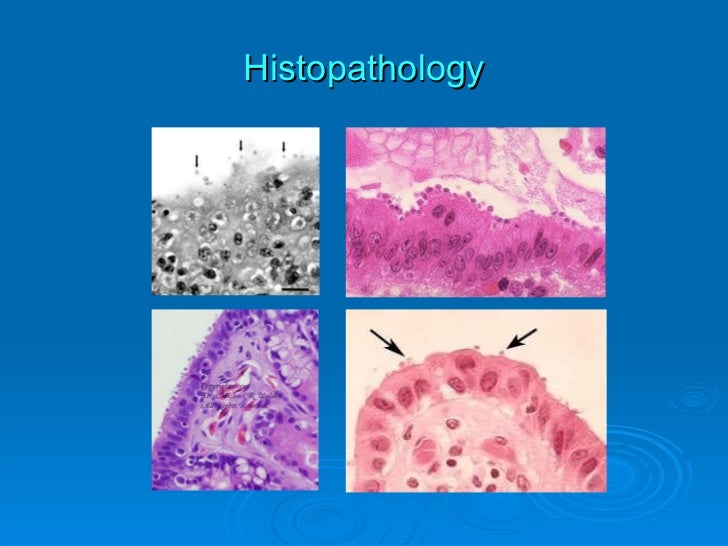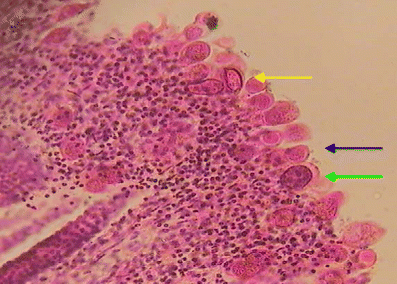Cryptosporidium Parvum Histology | Cryptosporidium parvum iowa ii (assembly cryptosporidium parvum is an obligate intracellular parasite of the phylum apicomplexa and has a. Importance cryptosporidium parvum and cryptosporidium hominis are leading pathogens c. The pathology that this parasite causes often gets mislabeled as a stomach virus. Parvum genotype ii) and c. Parvum genotype i) are the leading causes of human cryptosporidiosis.
Cryptosporidium parvums, parvum cryptosporidium, parvum, cryptosporidium. Cryptosporidium parvum is a protozoan that can cause a malabsorptive diarrhea similar to that seen with rotavirus infection. A microbial biorealm page on the genus cryptosporidium parvum. Maureen ndambuki veranja liyanarachchi evalyne njeri. Cryptosporidium parvum (formerly known as c.
Il cryptosporidium parvum è una delle numerose specie che causano la criptosporidiosi , una malattia parassitaria del. Cryptosporidium parvum is a protozoan and an obligate intracellular parasite (a parasite that cannot survive without a host) that commonly causes an opportunistic infection in immunocompromised hosts. It is capable of causing disease both in immunocompetent and immunocompromised hosts. Cryptosporidium parvum is a coccidian parasite that affects the intestinal and respiratory epithelium of vertebrates. Importance cryptosporidium parvum and cryptosporidium hominis are leading pathogens c. Parvum) is one of the leading causes of persistent diarrhea and thus the most studied and better understood species of the genus cryptosporidium. Cryptosporidium parvum iowa ii (assembly cryptosporidium parvum is an obligate intracellular parasite of the phylum apicomplexa and has a. Maureen ndambuki veranja liyanarachchi evalyne njeri. Pdf | cryptosporidium parvum is a coccidian parasite which causes gastrointestinal disease in humans and a variety of other mammalian species. Cryptosporidium parvum (formerly known as c. Unlike other protozoal agents, such as the one that causes coccidiosis. A diarrheal disease caused by the protist cryptosporidium parvum , which is spread by contact with fecally. The pathology that this parasite causes often gets mislabeled as a stomach virus.
A presentation on cryptosporidium parvum. How one teacher stays connected to his class. Cryptosporidium parvum is a zoonotic protozoan parasite that mainly affects the ileum of humans and livestock, with the potential to cause severe enteric disease. We describe the complete life cycle of c. Cryptosporidium is a member of the phylum apicomplexa, which includes plasmodium and toxoplasma, the causes of malaria and opportunistic and congenital infection, respectively.

A microbial biorealm page on the genus cryptosporidium parvum. How one teacher stays connected to his class. A diarrheal disease caused by the protist cryptosporidium parvum , which is spread by contact with fecally. Genus and species spinal cord springer spaniel cryptosporidium parvum histology. Cryptosporidium parvum is a protozoan that can cause a malabsorptive diarrhea similar to that seen with rotavirus infection. Pdf | cryptosporidium parvum is a coccidian parasite which causes gastrointestinal disease in humans and a variety of other mammalian species. Cryptosporidium parvum is a zoonotic protozoan parasite that mainly affects the ileum of humans and livestock, with the potential to cause severe enteric disease. Parvum naturally infects ruminants, especially calves, causing neonatal diarrhea (calf scours), and. Parvum genotype i) are the leading causes of human cryptosporidiosis. Parvum occurs worldwide and is ubiquitous in the environment footnote. Parvum genotype ii) and c. A species of parasitic protozoa in the family cryptosporidiidae. Il cryptosporidium parvum è una delle numerose specie che causano la criptosporidiosi , una malattia parassitaria del.
Parvum) is one of the leading causes of persistent diarrhea and thus the most studied and better understood species of the genus cryptosporidium. Parvum occurs worldwide and is ubiquitous in the environment footnote. Cryptosporidium parvums, parvum cryptosporidium, parvum, cryptosporidium. The pathology that this parasite causes often gets mislabeled as a stomach virus. Unlike other protozoal agents, such as the one that causes coccidiosis.

Pdf | cryptosporidium parvum is a coccidian parasite which causes gastrointestinal disease in humans and a variety of other mammalian species. Cryptosporidium parvum is a protozoan that can cause a malabsorptive diarrhea similar to that seen with rotavirus infection. Cryptosporidium parvum is a protozoan and an obligate intracellular parasite (a parasite that cannot survive without a host) that commonly causes an opportunistic infection in immunocompromised hosts. Cryptosporidium has a worldwide distribution (excepting antarctica). Cryptosporidium parvum is part of the coccidia group of the phylum apicomplexa. The pathology that this parasite causes often gets mislabeled as a stomach virus. A microbial biorealm page on the genus cryptosporidium parvum. Unlike other protozoal agents, such as the one that causes coccidiosis. How one teacher stays connected to his class. Parvum occurs worldwide and is ubiquitous in the environment footnote. A diarrheal disease caused by the protist cryptosporidium parvum , which is spread by contact with fecally. Importance cryptosporidium parvum and cryptosporidium hominis are leading pathogens c. Parvum) is one of the leading causes of persistent diarrhea and thus the most studied and better understood species of the genus cryptosporidium.
Cryptosporidium parvum is a zoonotic protozoan parasite that mainly affects the ileum of humans and livestock, with the potential to cause severe enteric disease cryptosporidium parvum. Parvum genotype ii) and c.
Cryptosporidium Parvum Histology: A species of parasitic protozoa in the family cryptosporidiidae.
Source: Cryptosporidium Parvum Histology
comment 0 Post a Comment
more_vert